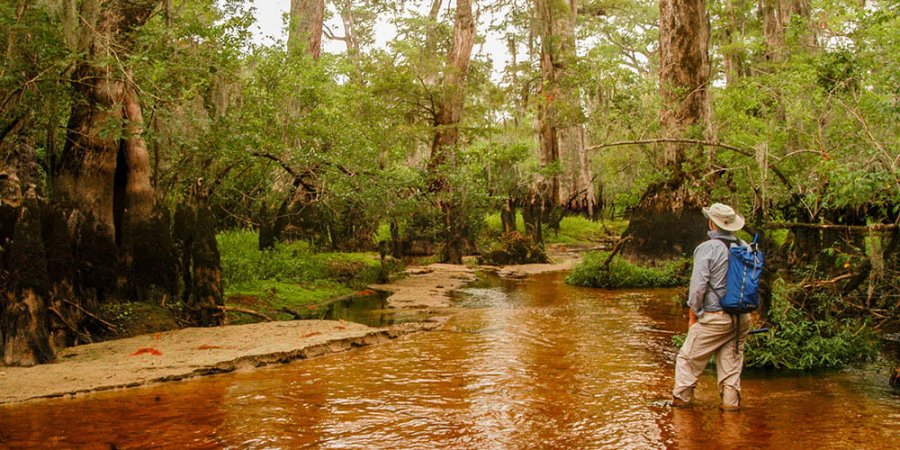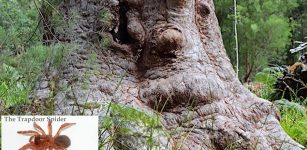One Of The Oldest Known Living Trees In Eastern North America Is At Least 2,624 Years Old
Eddie Gonzales Jr. – MessageToEagle.com – Researchers have studied bald cypress trees in North Carolina and discovered one of them is at least 2,624 years old. It’s the oldest known living tree in North America and the oldest known wetland tree species in the world.
David Stahle in North Carolina’s Black River. Photo by Dan Griffin.
The ancient trees are part of an intact ecosystem that spans most of the 65-mile length of the Black River. In addition to their age, the trees are a scientifically valuable means of reconstructing ancient climate conditions. The oldest trees in the preserve extend the paleoclimate record in the southeast United States by 900 years, and show evidence of droughts and flooding during colonial and pre-colonial times that exceed any measured in modern times.
See also:
Acacia Tree Uses Ants As Body Guards And Rewards Them With Shelter And Food
The Old Man Of Crater Lake: Mysterious Tree Trunk That Defies The Laws Of Physics
Wood Wide Web: Secret Communication Of Trees
“It is exceedingly unusual to see an old-growth stand of trees along the whole length of a river like this,” David Stahle, Distinguished Professor of geosciences the university’s Ancient Bald Cypress Consortium said in a press statement. “Bald cypress are valuable for timber and they have been heavily logged. Way less than 1 percent of the original virgin bald cypress forests have survived.”
Stahle has been working in the area since 1985, and cataloged bald cypress trees as old as 1,700 years in a 1988 study published in the journal Science. His work helped preserve the area, 16,000 acres of which have since been purchased by The Nature Conservancy, a private land-conservation group that keeps most of its holdings open to the public.
For the newest study, researchers used non-destructive core samples from 110 trees found in a section of the wetland forest they had not previously visited. “The area of old growth bald cypress was 10 times larger than I realized,” Stahle said. “We think there are older trees out there still.”
Written by Eddie Gonzales Jr. – MessageToEagle.com Staff Writer











